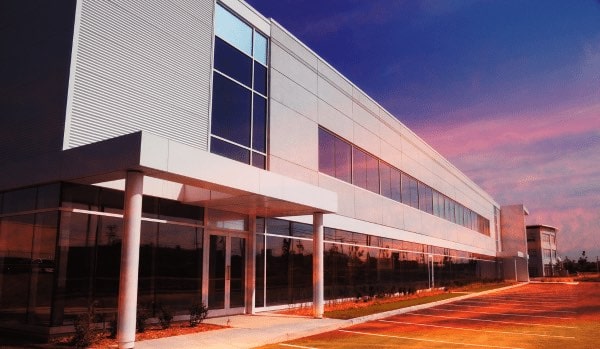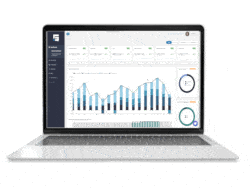Triple-net (NNN) leases are a common lease structure in commercial real estate. A well-planned NNN lease is an opportunity for owners to achieve a steady, relatively low-risk income, but despite their popularity, they can be confusing. For landlords and investors alike, understanding the benefits of NNN leases is crucial for making informed decisions in the realm of net lease investments.
Whether you’re already somewhat knowledgeable about triple-net leases or if this is all new to you, we hope you find our information helpful. In this blog post, we’ll dive into what makes an NNN lease, how they work, and why they could be a strong option for your business.
Let’s define a NNN Lease
First, what is a NNN (Triple-Net) lease? In the United States, landlords are responsible for paying maintenance fees, insurance, and taxes on their properties.
To cover these expenses, many landlords set up a “net lease” and charge their commercial tenants a fee (often referred to as “additional expenses” in the lease) on top of the base rent. This is different than a gross lease, where the tenant pays a single, usually higher base rent and the owner is pays directly for additional expenses. Additional expenses are also called Operating Expense Recovery or Common Area Maintenance Charges (CAM). Net leases help to lower the risk of investing in a commercial real estate property. The net lease structure also allows a landlord to adjust the base rent and the additional charges separately.
Triple-net isn’t the only type of net lease. A single-net lease only includes one of the three nets in the lease, usually property taxes. Double-net leases require the tenant to pay two of the three nets—usually property taxes and insurance premiums. Finally, the most common type of lease is the triple-net lease. The triple-net lease is usually abbreviated to “NNN lease” in writing—encompassing all three nets in one.
What Additional Expenses Do Tenants Pay for in an NNN Lease?
Additional expenses may include some or all of the following expenses:
- Common area maintenance (also called CAM or common use facilities)
- Utilities (e.g., gas, electric, water, telephone)
- Landscaping (mowing, snow removal, etc.)
- Property maintenance
- Property management
- Trash service
- Property taxes
- Insurance premiums
What are the Benefits of NNN Leases?
A well-structured NNN lease helps both the owner and the tenant. In general, triple-net leases provide tenants with more freedom while giving owners a steadier income stream with less need for day-to-day involvement in operations. Let’s take a closer look at the pros of NNN leases:
Less Responsibility, More Room for Profitability
A major benefit of NNN leases is that landlords can adjust the expenses at a different rate or on a different schedule than the base rent. This ability ensures that commercial building owners can stay on top of property taxes, insurance premiums, maintenance, and operating costs in addition to receiving the base rent each month.
Minimal Risk
Triple-net lease escalations are a way for landlords to control the risk of agreeing to a multi-year lease. Despite inflation and wear and tear, landlords can keep the building good condition year after year, while still turning a profit on their investment.
Consistency
Passing on additional costs, such as maintenance, taxes, and utilities, to the tenant provides owners with a more predictable income.
Tenant Involvement
NNN leases often give tenants more freedom to customize their space, have direct control over maintenance and utility costs, and find an insurance plan that suits their needs. They may also be able to negotiate a lower base rent because of their responsibility for additional expenses. This increased agency can reduce costs and increase tenant satisfaction, which is especially important because NNN leases can last 10-15 years.
What Are The Drawbacks of a Triple Net Lease?
Triple net leases are popular in commercial real estate, but they do come with some drawbacks.
Tenant Drawbacks
One primary concern for tenants is the higher monthly costs compared to double or single-net lease structures. Additionally, tenants are responsible for property taxes, which means they may face tax-related liabilities, including fines and penalties.
Owner Drawbacks
For landlords, triple-net leases can reduce overhead costs but may also risk decreased long-term earnings. Earning caps, often included in triple net lease agreements, limit landlords from increasing rent prices beyond a certain point. These limits can result in a loss of future earnings if property values rise.
Even though most triple-net renters undergo extensive checks, there is still a chance that they may not pay. Investors may experience cash flow problems due to vacancies and end up covering the expenses that renters typically pay. Additionally, landlords may remain responsible for the property’s roof and structure, which could result in high repair costs.
Track Leases Easily with STRATAFOLIO
Selecting the best property management software designed to monitor your NNN leases ensures you stay ahead in the competitive real estate market. With STRATAFOLIO, you can easily track and manage your lease agreements, helping you avoid potential pitfalls and capitalize on opportunities.
Start optimizing your lease agreements today to secure a more prosperous future. Our intuitive platform allows you to make informed decisions, saving you time and resources. Don’t leave your lease management to chance—contact us today to learn how we can help you streamline your process and maximize your profits!




